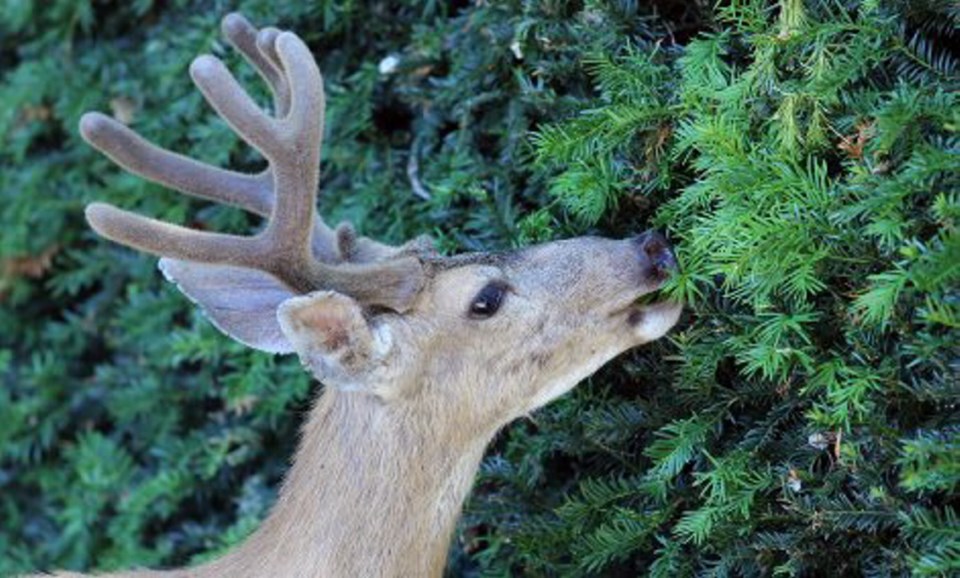A citizens’ group formed in opposition to the culling of deer in Oak Bay is looking to organize a count of the animals.
The Urban Wildlife Stewardship Society aims to create a photo inventory of deer living in and around the Oak Bay area, with the help of citizens using cellphones or cameras to take pictures.
Ultimately, the group hopes it can identify individual animals, the way marine researchers identify individual killer whales by unique characteristics of their dorsal fins.
Urban Wildlife president Bryan Gates said with identifiable individuals a statistical method can be employed to make for accurate census numbers.
Gates said all people need to do is take a picture of the deer — head on with ears spread is best — and forward it via email, along with the date and approximate street location where the shot was taken.
Structures such as antlers, nicks in the ear or marks of past injuries suffered in fights or on things like fences can make it easier to identify specific animals.
“I’ve got one particular buck that has what looks like a shark bite taken out of his ear,” he said. “So I call him ‘Shark Bite.’ ”
Gates said an accurate count is especially important given the move by Oak Bay and the Capital Regional District to cull 11 deer this year. The animals were trapped and dispatched with a bolt-gun.
Such a cull is foolish, Gates said, since nobody has a good idea how many deer are living in and around Oak Bay.
“So what number of deer is too many for Oak Bay and how many do we have now?” said Gates. “Nobody really knows.”
The CRD held counts this year, with a high of 55 animals recorded.
Gates, a retired wildlife biologist who specialized in deer, elk, moose, mountain goat and bighorn sheep, said the counts should not be seen as accurate.
His group is awaiting permission from federal and provincial government officials to begin a program sterilizing the does.
The animals would be trapped and the females injected with an experimental drug that makes them infertile for a number of years.
Gates speculated leash laws for dogs might be one reason deer have been moving into Greater Victoria over the last 10 years. Decades ago, many dogs were able to run free and chase away deer.
Another reason is a decline in hunting. In days past, citizens spotting a deer were more likely to shoot it for food.
Now, people are seeing the animals and some are complaining they are a problem, especially to cars.
Gates’ group has been busy posting warning signs to alert motorists about the likelihood of coming across deer on the road.
He said the signs appear to be working.
“Many people appreciate the deer,” said Gates, adding he thinks we can manage wildlife living within our environment.
“I know a lot of people who say, ‘Wow, it’s so nice to have deer in our community.’ ”
To help the Urban Wildlife Stewardship Society with its photo inventory, send your photos of deer to [email protected]. Make sure to include the date and location.



